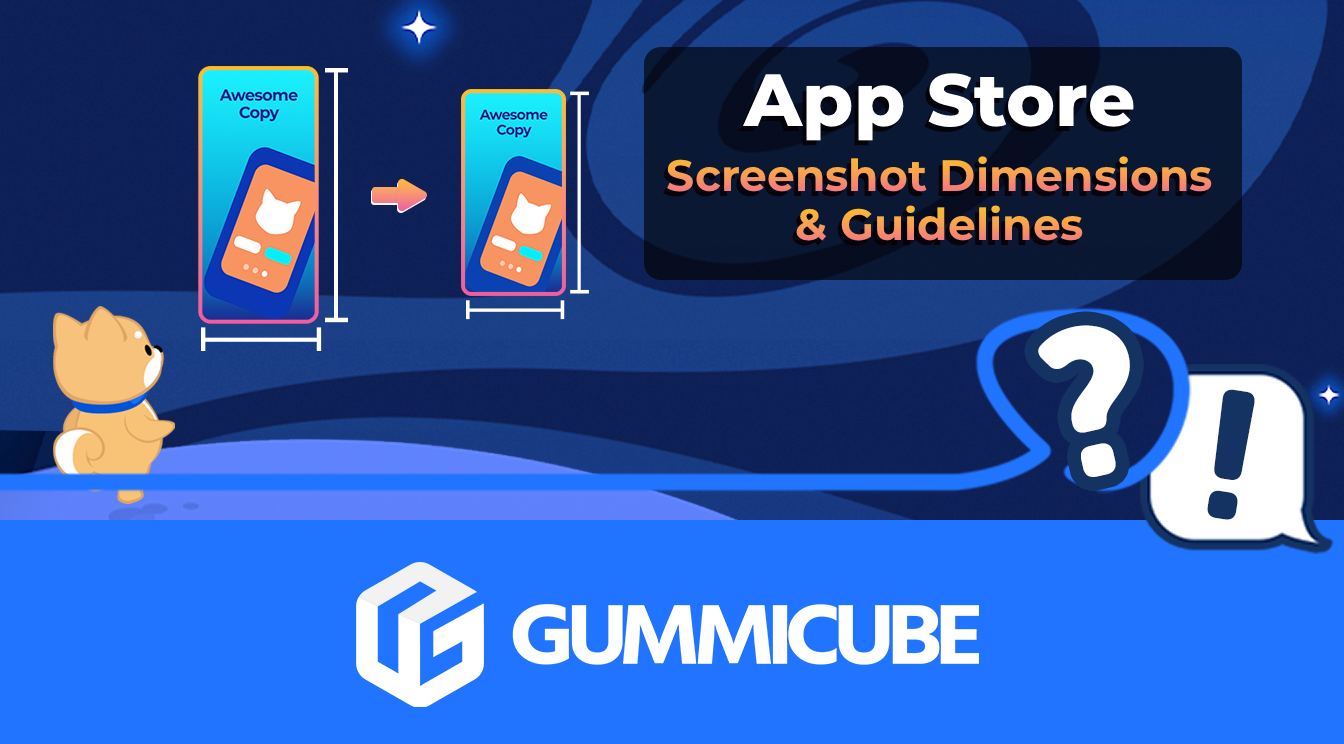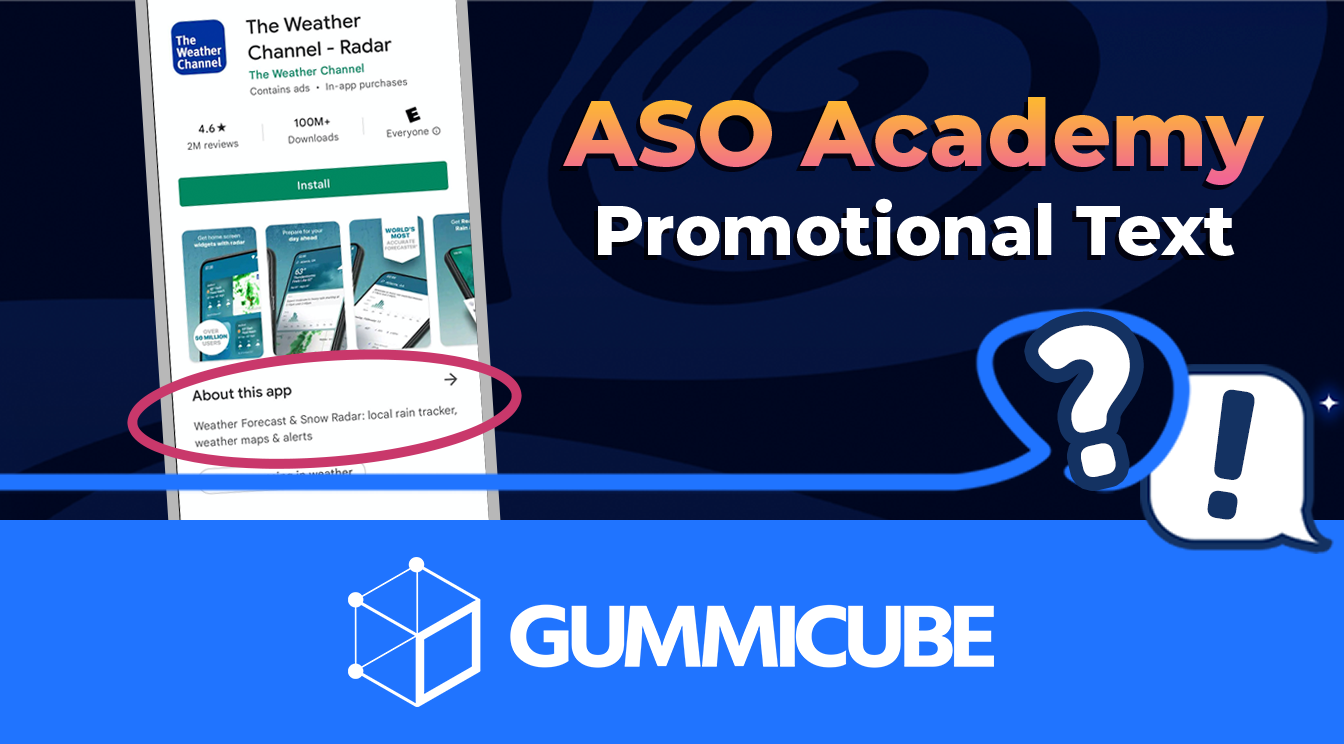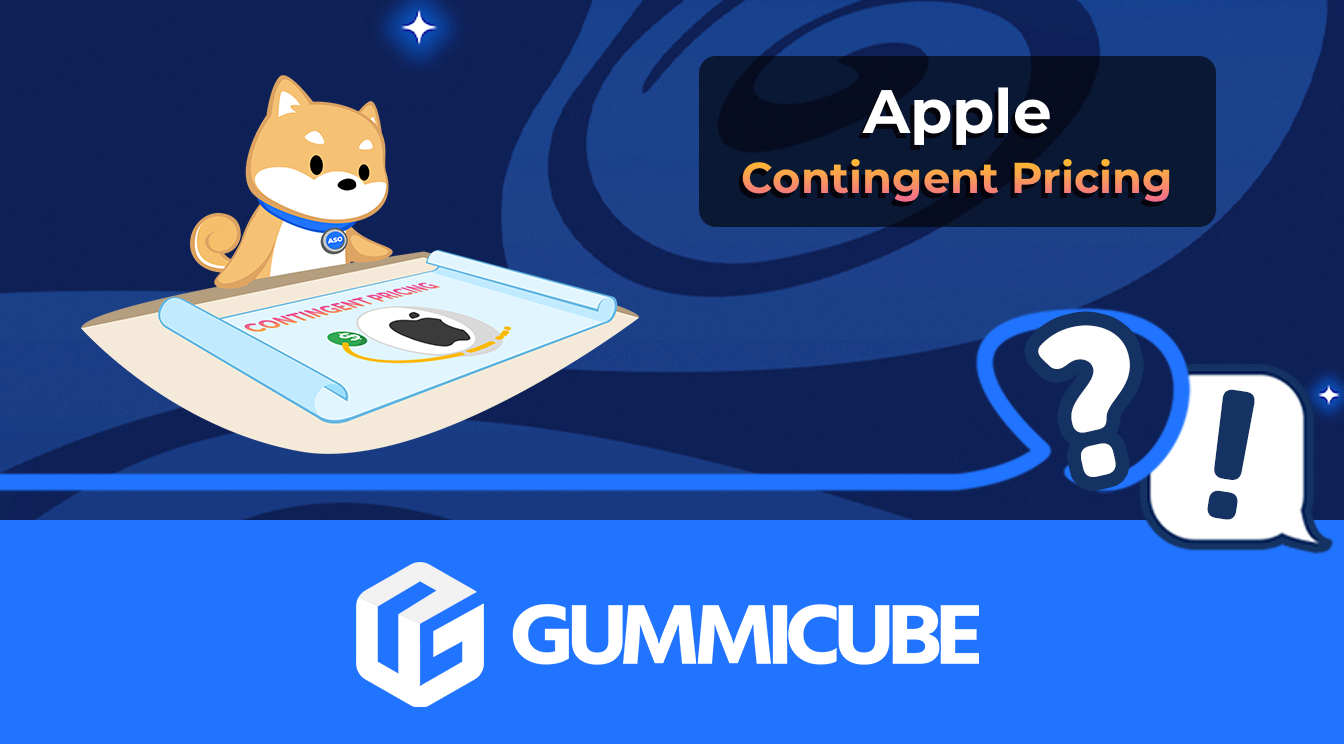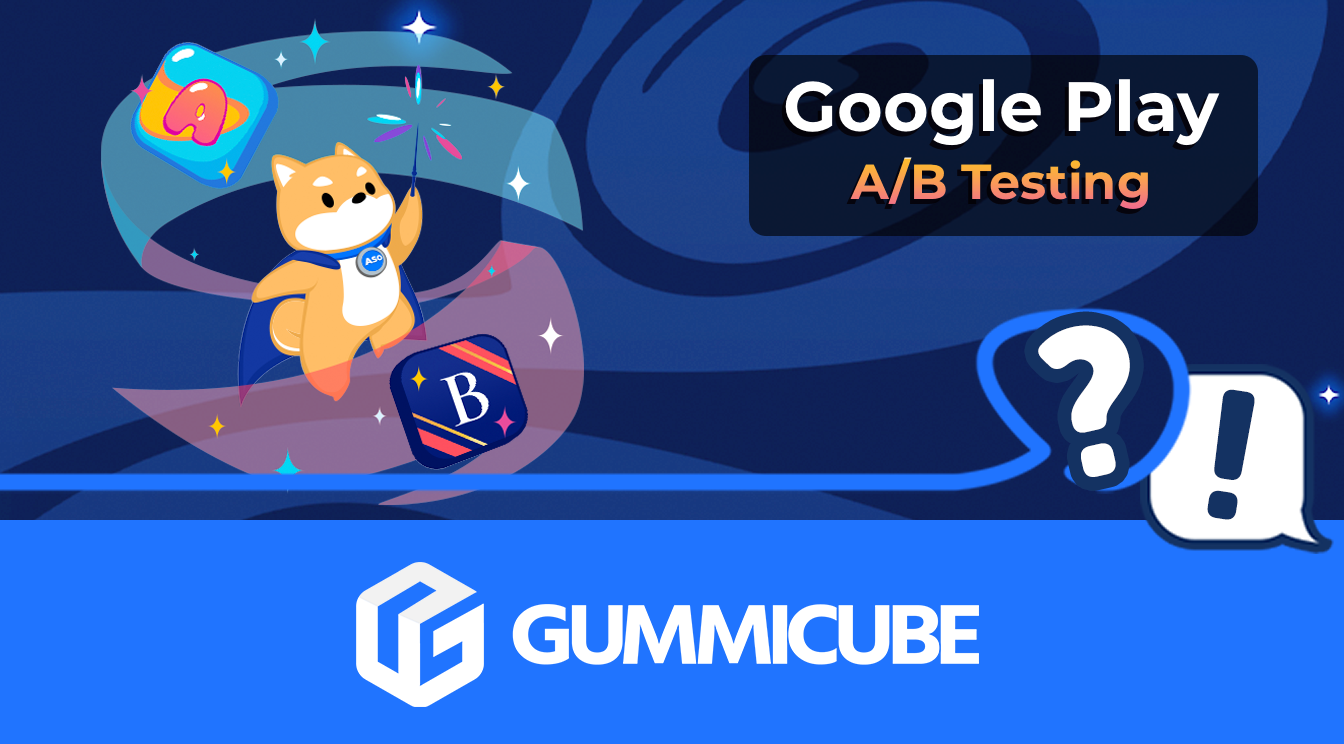
App Store Screenshot Dimensions & Guidelines
Posted on August 1st, 2024
Make sure your app stays compliant with the latest App Store Screenshot Dimensions & Guidelines here

If you are like many developers, you may not know what exactly Apple's Promotional Text is for – if you've seen it at all. The Promotional Text is not required to release your app nor does it impact your keyword indexation, however, this is still a crucial part of fully optimizing your App Store listing. Learn more about how you can use Promotional Text to drive conversion and keep your users informed in this week's ASO academy.
We live in an incredibly fast-paced society, where your online shopping can be delivered to your door in just a few hours. When searching for an app on the App Store, many people just don't have time to read through every app's description before they install. In fact, Apple has stated that nearly 65% of all installs happen directly from the search page when users tap the ‘Get’ button.
The faster you're able to communicate your app's core features and value propositions to potential users, the more likely you are to get them to convert. This is why ASO best practices stress the importance of a solid screenshot set. For those users that don't convert from search results and choose to view your Product Page, your Promotional Text may determine whether they stay to learn more or bounce back to check out a competitor's Product Page instead.
So what exactly is the Promotional Text?
Appearing above the fold on your Product Page, the Promotional Text is a 170 character snippet where you can introduce your app to perusers. An app that doesn't have a Promotional Text will instead show the first 170 characters of the full description. This leads to truncation, which is not only unsightly but can also change the intended meaning of the sentence that got cut short. It is important to use this dedicated space in addition to your full description to ensure clarity and avoid repetitiveness.
As the name implies, this area is also a great place to communicate promotions and special events to potential users. Apple originally intended the Promotional Text to do just that; promote deals, special events, and new features. This is one of the reasons why the Promotional Text can be updated at any time without being tied to a new release. Developers have the ability to change their Promotional Text to call out different deals, sales, or events each day of the week.
An ideal Promotional Text for an online shopping app might look like this:
"Special winter sale! Women's fashion 70% off, shoes 50% off - Check out our latest outerwear collection from Milan!"
While a racing game would possibly benefit from this structure:
"Put the pedal to the metal and smoke your competition! The world racing tournament starts this Friday, are you ready?"
In either case, these are examples of Promotional Texts that showcase limited-time events using compelling language. No new build needs to be released to communicate these features, and they can be taken down the moment the promotion ends. It is ideal to include value propositions and calls to action to drive users to tap and learn more about your app. Engaging language written for your target audience is more likely to keep a user's attention than a dry list of features.
The Promotional Text is also used by Apple Search Ads as the default text when no creative set is displayed. If you're running Search Ads for your app, then you should align the Promotional Text with your ad campaign. Include the core keywords that your potential users are searching for in your Promotional Text so they know your app is relevant to their query at first glance.
When writing Promotional Text for your iOS app Product Page, there are a few best practices that you should keep in mind:
Experiment with different Promotional Texts to see what works best for your app. With the help of an expert ASO agency, much of the guesswork can be taken out of this process.
The Promotional Text is an optional 170 character field on the App Store, where developers can showcase features, events, and promotions. Updates can be made to the Promotional Text at any time without requiring a new build. Despite having no impact on keyword indexation, this area is still a crucial part of App Store Optimization.
Want to learn more about App Store Optimization? Contact Gummicube and we’ll help get your strategy started.

Make sure your app stays compliant with the latest App Store Screenshot Dimensions & Guidelines here

Soon developers will be able to extend their customer lifetime value with a handy new way of providing subscription offers directly through Apple. Contingent Pricing looks to act as a revolutionary new system for leveraging new upsell & cross-sell opportunities all within Apple’s ecosystem.

Have you ever A/B tested your Google Play listing? If not, you're probably navigating the Play Store marketing blind, and leaving valuable installs on the table.